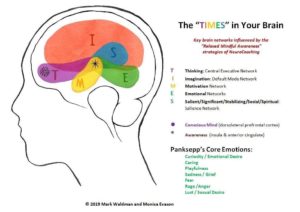
“Teachers are the engine that drives social and emotional learning (SEL) programs and practices in schools and classrooms, and their social-emotional competence and wellbeing strongly influence their students. But when teachers poorly manage the social and emotional demands of teaching, students’ academic achievement and behavior both suffer.” This quote is from Dr. Kimberly Schonert-Reichl, the NoVo Foundation Endowed Chair in SEL in the Department of Psychology at the University of Illinois at Chicago.
According to new data from the RAND Corporation, stress, more so than low pay, is the main reason public school teachers leave their classrooms. And now, the pandemic has increased the pressures put on teachers. Of those surveyed, 55 percent quit in the two school years leading up to the pandemic, while the others left after March 2020. Most teachers either retired early, resigned, or took an unpaid leave of absence in both groups.
How can we boost teachers’ SEL and manage their stress to prevent this burnout and turnover? Endominance spoke to Andrea Samadi, former educator and founder of a program that provides educators with strategies to reduce stress at home and in the classroom with the most current neuroscience findings. This article reveals how stress impacts the brain and how Samadi uses neuroscience and SEL to help teachers achieve optimal emotional health and wellness.
How Stress Impacts the Brain
One report by the Yale Center for Emotional Intelligence states, “Chronic stress among teachers is linked to decreases in teacher motivation and engagement, leading to burnout. Educators who are burnt out have poorer relationships with students and are also less likely to be positive role models for healthy self-regulation for their students and their families.”
We know the social and emotional outcomes of stress in the classroom – but how does stress physically impact our brains? The same Yale Center report reveals, “Emotions like anxiety and fear disrupt concentration and interfere with thinking. Chronic stress, especially when poorly managed, can result in the persistent activation of the sympathetic nervous system and the release of stress hormones like cortisol. Prolonged release of this and other chemicals impacts brain structures associated with executive functioning and memory, diminishing educators’ ability to be effective and undermining student learning.”
Dr. Kerry Ressler, chief scientific officer at McLean Hospital and professor of psychiatry at Harvard Medical School, tells Harvard Health, “Scientists have seen changes in how the brain processes information when people experience real-life stress or stress manufactured in a research setting. Either type seems to interfere with cognition, attention, and memory.” In the same article, Jill Goldstein, a psychiatry and medicine professor at Harvard Medical School, states, “Stress affects not only memory and many other brain functions, like mood and anxiety, but also promotes inflammation, which adversely affects heart health. Stress has been associated with multiple chronic diseases of the brain and heart.”
To understand why stress affects the mind, it’s crucial to know how the brain works. Dr. Ressler suggests, “Researchers believe that when one part of your brain is engaged, the other parts of your brain may not have as much energy to handle their vital tasks.” For example, suppose someone is in an emotionally taxing situation. In that case, the amygdala (the part of the brain that processes threatening stimuli) may take over, leaving the parts of the brain that store memories and perform higher-order tasks with less energy and the ability to get their jobs done. “The basic idea is that the brain is shunting its resources because it’s in survival mode, not memory mode,” states Ressler.
Creating New Neural Pathways to Reduce Stress in the Classroom
Endominance spoke with Andrea Samadi, a former educator who worked closely with neuroscience researcher Mark Robert Waldman to learn the science behind high-performance strategies in schools for the past 20 years. She is the founder of Achieveit 360, which provides educators with tools to reduce stress at home and in the classroom. Samadi has been such a strong proponent of the neuroscience behind SEL; she also hosts a podcast Neuroscience Meets Social and Emotional Learning, which is now in 143 countries. Samadi reveals to Endominance, “For teachers to improve their social and emotional skills and stress levels, and experience success in the classroom and their personal lives, it begins with putting their brain health first.”
When asking Samadi some of the techniques and theories she uses in her workshops, she reveals, “If you search online for recent studies on the brain, instead of looking at different parts of the brain (the localizationist view), like we used to do, researchers now study different networks in the brain to gain understanding – or Brain Network Theory. Now, we can measure and see the activity light up in fMRI scans in each of these brain networks.”
The Brain Network Theory
Below is a visual map of the Brain Network Theory and TIMES – or thinking, imagination, motivation, emotional and salient networks.

Samadi discusses one of these networks and how educators can tap into this region to reduce stress, heighten creativity, and improve productivity. She states, “We have the Default Network or the brain region where imagination processes like daydreaming and creative problem solving occur. This area is also referred to as the ‘Imagination Network.’ However, this part of the brain also carries worry, doubts, and fears. This network also contains your creative problem-solving ability, so it doesn’t just include our anxiety and fears but our ability to move past them. Teachers need to be mindful of what they are thinking about to halt the cycle of negative thinking from taking over their mind.”
To keep this region of the brain resilient, Samadi suggests taking ‘Brain Breaks’ to achieve ‘Aha” moments. She explains, “If you’ve ever stepped away from your work and decided to take a walk or a shower and during this time you got an instant flash of insight or an ‘Aha’ moment, this is the Imagination Network at work. Samadi suggests that taking “Brain Breaks’ like these is crucial to combat burnout. She states, “My husband and I would take two days off on the weekend, which was important, but we still found ourselves stressing about what Monday would hold as far as work. I believe taking ‘Brain Breaks’ frequently during the week proves to be even more beneficial in combatting stress. Educators need to learn to switch back and forth to this network during the workday to override anxiety and fear and replace it with creativity and productivity when working on difficult tasks.”
The Amygdala First Aid Station
When asking how teachers can break negative habits in the classroom, Samadi tells Endominance,” To interrupt these moments of anxiety, first we must break the stress cycle and implement healthier coping mechanisms through social and emotional tactics.” She references the work of Lori Desaulters, Assistant Professor at Butler Univerity College of Education, who created the idea of the “Amygdala First Aid Station.” Samadi recommends this method for students and teachers to break the sequence of stress in the classroom. Samadi explains, “There is always that one student who acts out in a classroom. The anxiety between the teacher, the disruptive student, and the rest of the class during this time becomes palpable. However, instead of kicking the student out of the classroom, I’d tell teachers about the “Amygdala First Aid Station.”
According to a Linkedin article by Desaulters, this station is an area where “students learn about their neuroanatomy as they begin to use this space to regulate. It is not a reward or punishment but a safe place for negative emotions to be burned off. The strategies and activities built into this space meet the child or adolescent where they are in development and are supported by the research of Karyn Purvis, Peter Levine, Dan Seigel, and many others.” Desaulters offers different objects for this station, including:
- Soft colors, calming lotions (lavender), and lighting
- Elliptical machine or stationary bike for exercise
- Weighted blankets and an eye pillow
- Pulse meters so students can take their resting heart rate and then compare this to an elevated or lowered heart rate and track these beats to see patterns.
Samadi tells Endominance, “This station is a place for students to calm down and re-focus. The amygdala is a critical brain region for the expression and experience of emotions. When stress happens, it gets hijacked. Learning how to self-regulate is key to balancing these emotions. Teaching the neuroscience behind it is even more powerful for kids – it gives them a sense of control. This station also allows teachers the space to calm down, re-focus, and re-engage the classroom – preventing chronic stress.” Samadi ends our interview with, “Understanding different SEL tactics and using neuroscience to support these techniques and skills is a powerful tool in breaking teachers’ stress cycles, improving creativity, creating safe spaces for students to learn, and preventing burnout.”

